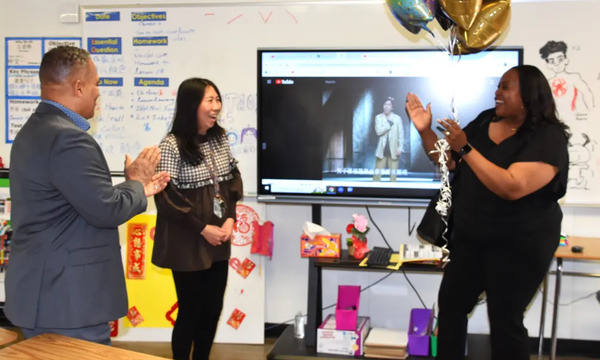Professor of Archeology, Paul Langenwalter, has been researching ancient burial practices and the companion like relationship Native Americans had with their pet dogs — maybe an early start to the phrase man’s best friend. Presenting a paper earlier this year titled, “Dog Burial and Related Ceremonial Activity among the
Miwok and Yokuts of the Sierra Nevada in California,” to the Society for American Archaeology, his research became more widely known after the Sacramento Bee ran the article, “Indians, Dogs Companions in Life and Death Centuries Ago.”
Langenwalter took a few minutes to answer some questions regarding his research and give an update on Biola’s own archeology dig of the wooly mammoth located adjacent to Biola’s baseball field.
Tell me a little about your research and what you presented at the Society for American Archaeology.
Langenwalter: I study the human animal interactions and relationships to human beings using archaeology information. I’m using food remains and broken pieces of bone and getting information from a biological stand point. I’m doing it to develop human behaviors. I’m looking at what the rules for selection were, what animals were being used for food, and more. Part of that domain are things like pets and ritual and ceremonial use of animals. The paper I gave for the society dovetailed together a bunch of research that I have been doing for a while that I am currently synthesizing into journal articles. My specialty is archaezoology.
How did you originally become interested in archaeology?
Langenwalter: The fact of the matter is when I was in high school, the guys that I went to school with liked to go fossil hunting on the weekends or ditch class to go during the week. I got into it with them and I decided I wanted to be a paleontologist. There were no paleontology majors available to me in school. However, I also had an interest in anthropology. I went to Cal State Long Beach and majored in anthropology and my advisor was an archaeologist. He ultimately became my father-in-law. One day after I had been in school for a while, I mentioned that I was working full time at the Los Angeles county Museum of Natural History in the section of vertebrate. Basically, I’d identify animal bone 40 hours a week, which was rare for someone to have that experience. He immediately offered me a job.
What are some of the interesting aspects in your research regarding the relationship between humans and dogs?
Langenwalter: In the sierra foothills, the roles that the animals played were pets. They were property and traded sometimes. They were used as hunting animals, running down rabbits, squirrels, and used as guard animals. The dogs would bark, and let people know when strangers were coming into the settlement.
However, they were also used as food, sometimes as a special dish and sometimes also killed and eaten as a food source as a large group ceremonial activity. Amongst the Miwok and Yokuts at the annual mourning ceremonies, the given village would host the surrounding village. In both cases, there would be a mock attack at the beginning of the mourning period. You would have visitors run through the village and if they saw a dog they would shoot it with a bow and arrow and they would find the owner of the dog and pay for it as their food while they were there and that freed up time to do group mourning activities.
They buried their pets. They felt their dogs were special enough to treat them like their family totem. Often they named them after their totemic animal alluding to the spiritual tie between totemic spirit of lineage and the pet. They saw them as valuable property. One man said his dog was worth life itself and he would give it his last piece of meat. It’s fair to assume that the owners were everywhere between blasé and very closely connected like in our own society to their pets.
What is the current status of the wooly mammoth dig?
Langenwalter: We are continuing to dig. We removed the right tusk over interterm [winter break], it’s in a plaster jacket in storage and we will start prepping it maybe this fall. The excavation is moving along slowly. Our main focus is getting the residues from the screen-washing site sorted.
For further excavation in the Fall semester, I’m going to be focusing on several units, one is coming down on a large limb bone which should be part of the hind legs, and another coming done on limb bone from one of the forelegs. We’re hoping we will get close to the left hand side tusk. In the mean time, I’m looking forward to getting the sorting done.
Written by Jenna Bartlo, Media Relations Coordinator. Jenna can be reached at 562.777.4061 or through email at jenna.l.bartlo@biola.edu.
 Biola University
Biola University